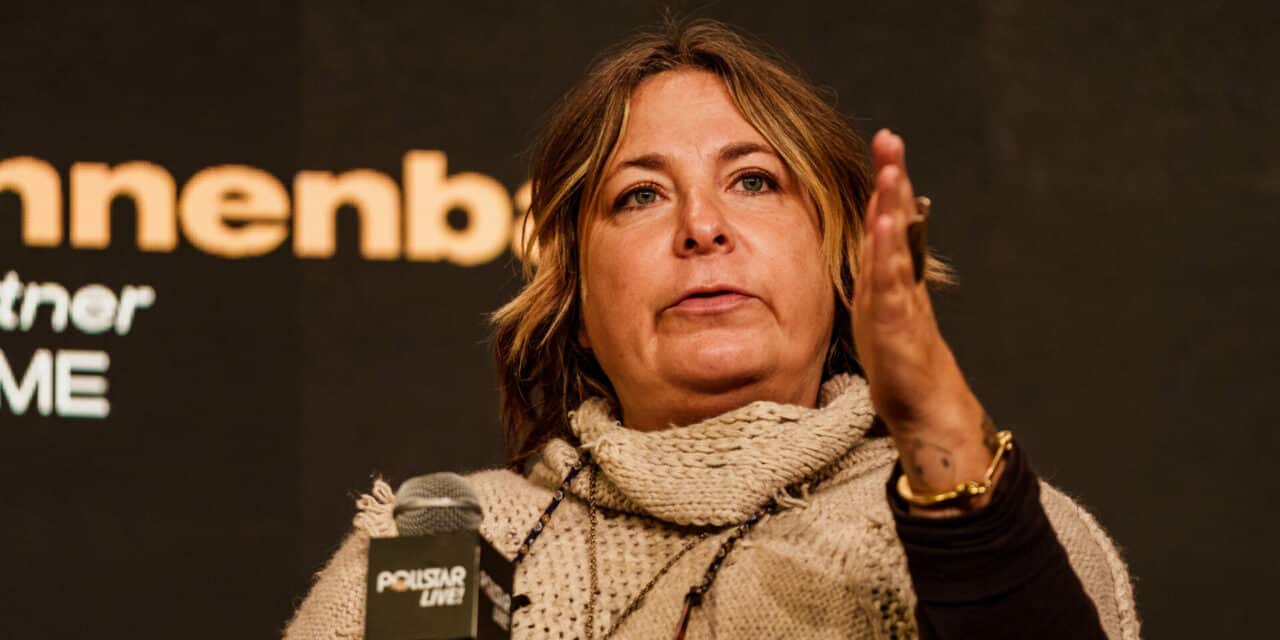LEGITIMIZE IT: Ina Jacobs of CAA makes a point during one of the panel discussions she joined at Pollstar Live in Beverly Hills, California. (Staff Photo)
Costs On The Rise As Budgets Get Tightened
BEVERL:Y HILLS, CALIFORNIA — The cost of touring is on the rise at the same time budgets are being squeezed, so what’s to be done?
That was one of the big questions put to a panel of concert industry experts entitled “My Walkaway is What? Navigating Settlements in the Era of Plus, Plus, Plus,” at last month’s Pollstar Live Conference in Beverly Hills.

Ina Jacobs, who handles financial analytics and global touring operations at CAA, said in an era of sharply rising costs, agents need to “take a deeper dive into expenses that are being presented and legitimizing them.”
“Certainly, during COVID, there was a line item in the United States that doesn’t seem as applicable today as it was,” she said in response toa question from panel moderator Chris Wright, general manager at Allegiant Stadium . “I think it’s just our job as agents to legitimize those expense and address how they are impacting the deal.”
Stagehand costs have gone up, said panelists.
“Promoters end up hiring 25% more stagehands because somebody didn’t show up,” said Jeffrey Hasson, agent at United Talent Agency.
“Hiring and organizing much larger crews at shows just to keep things running smooth certainly has had an effect on the bottom line,” he said.
Jacobs added that last year, riggers were in short supply locally when it came to big shows,.
“Promoters were flying in riggers from other markets that didn’t have shows that day,” she said.
“We were actually transporting stagehands from city to city,” said Hasson, who pointed out that artists’ costs have also gone up.
“We have to get creative on how to overcome that deficit,” he said. “There has to be give and take on both sides to come to a better place for the artist.”
The majority of artists were making 20-25% less from touring than they were before,” said Jamie Cheek, CEO at FBMM. “If they were making 40% of their gross, that was down in the 30% range and it was all because you had to lock in buses earlier, you had to get crew earlier, you had to retain them earlier. It was a major impact across the entire industry.”
Artists, agents and promoters were also dealing with shows that were booked up to three years earlier, said Aaron Tannenbaum, partner at WME.
“Now, we’re doing new deals and everything’s gone up,” he said.
How does that impact the net walkaway for acts at various levels?
“Everyone’s affected, but obviously, the smaller acts are more affected,” Hasson said. “Every dollar counts when you are 500-cap club band.”
Adam Kornfeld, agent at Artist Group International, said demand for shows is high.
“No matter what size band you are, you can get it if someone’s willing to pay it,” he said. “It’s the Wild West really. If you can bring commerce to a venue, that’s an attractive asset for them.”
Cheek said he had clients who passed on touring in 2022 and waited to 2023.
“There are still still some challenges, but those decisions were based on profitability.”
On cost saving measures, panelists agreed that sharing staging over multiple shows offer savings that could add up to hundreds of thousands of dollars at each stop in the case of stadium shows.







